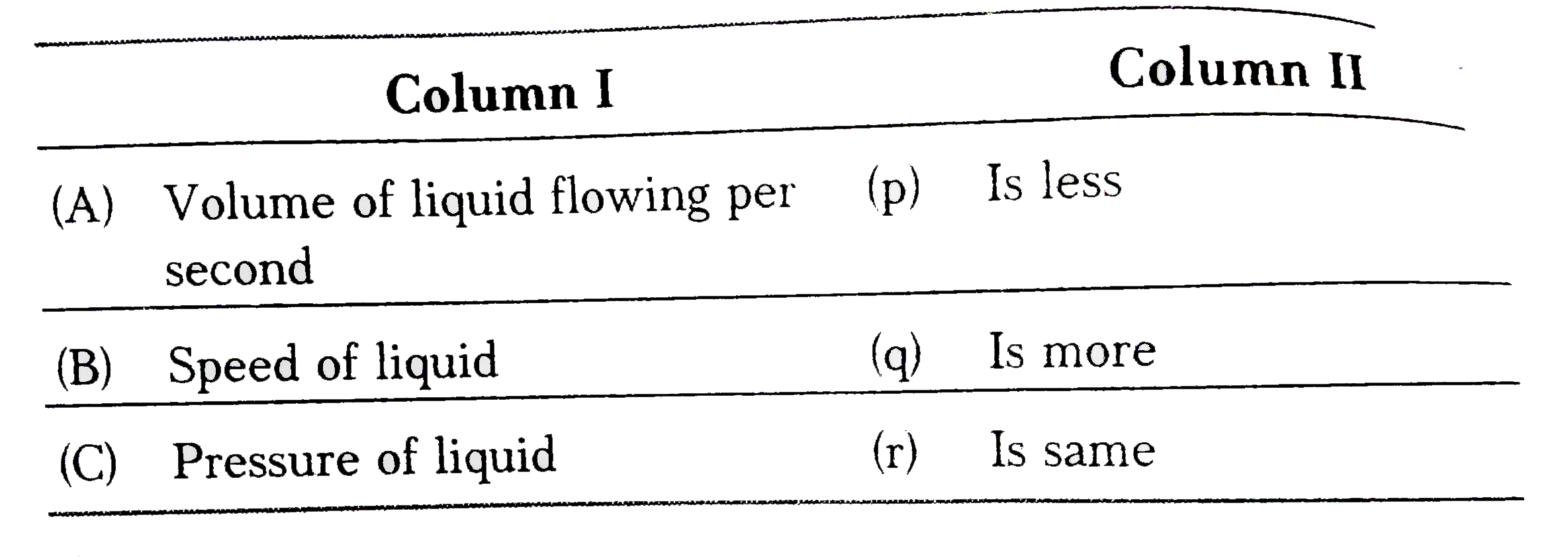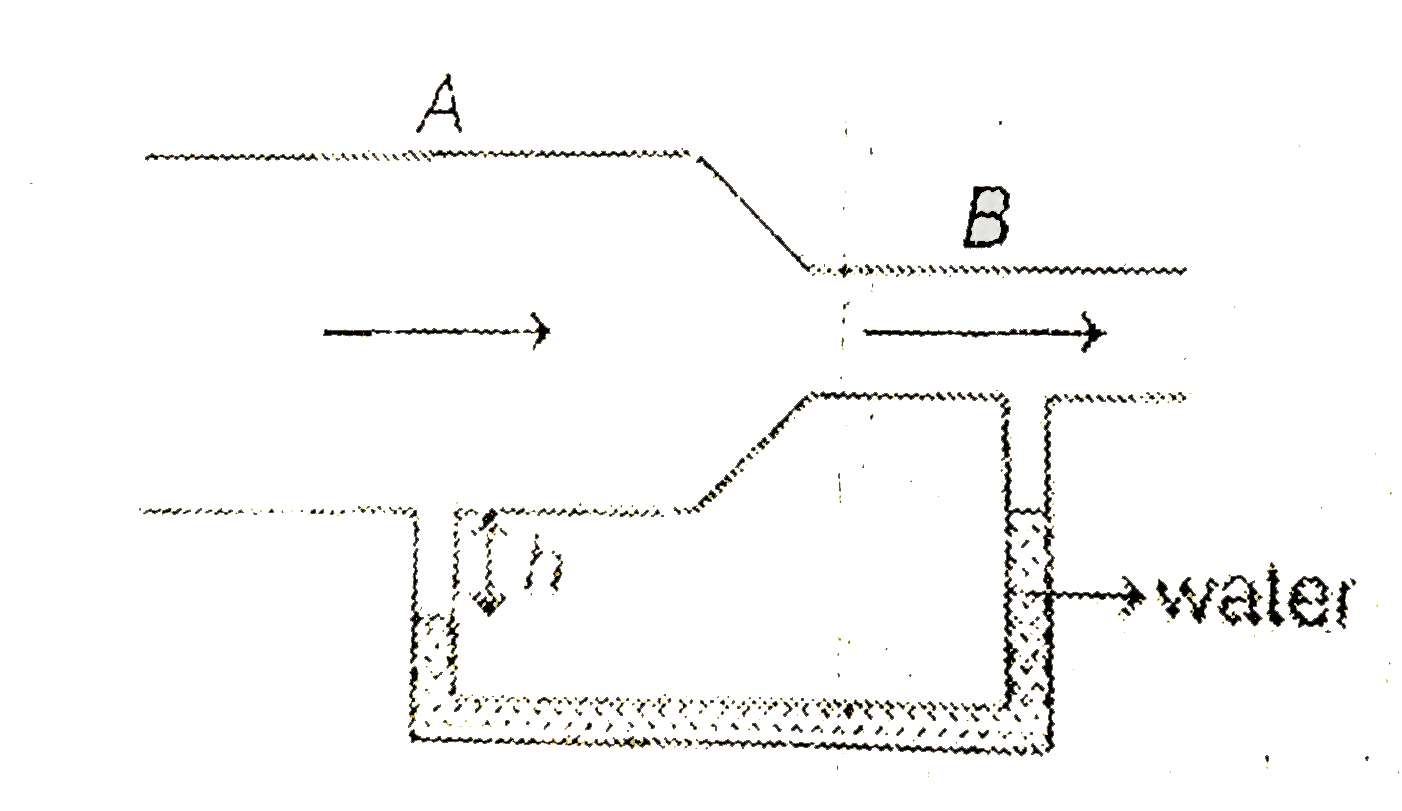An ideal fluid flows through a pipe of circular cross-section made of two sections with diameters 2.5cm and 3.75cm. The ratio of the velocities in the two pipes is
9:4
3:2
√3:√2
√2:√3
The correct Answer is:A
To solve the problem of finding the ratio of the velocities in two sections of a pipe with different diameters, we can use the principle of continuity for an ideal fluid. Here’s a step-by-step breakdown of the solution:
Step 1: Understand the Problem
We are given two sections of a pipe with diameters:
- d1=2.5cm
- d2=3.75cm
We need to find the ratio of the velocities V1 and V2 in these two sections.
Step 2: Use the Equation of Continuity
According to the equation of continuity for an incompressible fluid, the product of the cross-sectional area A and the velocity V at any two points in a flow must be constant:
A1V1=A2V2
Step 3: Calculate the Areas
The area A of a circular cross-section is given by:
A=πr2
Where r is the radius of the pipe. The radius can be calculated from the diameter:
r=d2
Thus, the areas for the two sections are:
A1=π(d12)2=πd214
A2=π(d22)2=πd224
Step 4: Set Up the Equation
Substituting the areas into the continuity equation gives:
πd214V1=πd224V2
We can simplify this by canceling π and 4 from both sides:
d21V1=d22V2
Step 5: Solve for the Velocity Ratio
Rearranging the equation to find the ratio V1V2:
V1V2=d22d21
Step 6: Substitute the Values
Now, substituting the given diameters:
d1=2.5cm,d2=3.75cm
Calculating the squares:
V1V2=(3.75)2(2.5)2=14.06256.25
Step 7: Simplify the Ratio
Calculating the ratio:
V1V2=14.06256.25=2.25
This can also be expressed as:
V1V2=94
Final Answer
Thus, the ratio of the velocities in the two sections of the pipe is:
V1V2=94
We are given two sections of a pipe with diameters:
- d1=2.5cm
- d2=3.75cm
According to the equation of continuity for an incompressible fluid, the product of the cross-sectional area A and the velocity V at any two points in a flow must be constant:
A1V1=A2V2
The area A of a circular cross-section is given by:
A=πr2
Where r is the radius of the pipe. The radius can be calculated from the diameter:
r=d2
Thus, the areas for the two sections are:
A1=π(d12)2=πd214
A2=π(d22)2=πd224
Substituting the areas into the continuity equation gives:
πd214V1=πd224V2
We can simplify this by canceling π and 4 from both sides:
d21V1=d22V2
Rearranging the equation to find the ratio V1V2:
V1V2=d22d21
Now, substituting the given diameters:
d1=2.5cm,d2=3.75cm
Calculating the squares:
V1V2=(3.75)2(2.5)2=14.06256.25
Calculating the ratio:
V1V2=14.06256.25=2.25
This can also be expressed as:
V1V2=94
Thus, the ratio of the velocities in the two sections of the pipe is:
V1V2=94
Topper's Solved these Questions
- MECHANICAL PROPERTIES OF FLUIDSBOOK - NCERT EXEMPLAR ENGLISHCHAPTER - MECHANICAL PROPERTIES OF FLUIDSEXERCISE - Multiple Choice Questions (More than One Options)
5 Videos
- MECHANICAL PROPERTIES OF FLUIDSBOOK - NCERT EXEMPLAR ENGLISHCHAPTER - MECHANICAL PROPERTIES OF FLUIDSEXERCISE - Very Short Answer Type Questions
5 Videos
- LAWS OF MOTIONBOOK - NCERT EXEMPLAR ENGLISHCHAPTER - LAWS OF MOTIONEXERCISE - Long answer Type Questions
9 Videos
- MECHANICAL PROPERTIES OF SOLIDSBOOK - NCERT EXEMPLAR ENGLISHCHAPTER - MECHANICAL PROPERTIES OF SOLIDSEXERCISE - LONG SHORT ANSWER TYPE QUESTION
16 Videos
Similar Questions
An ideal fluid flows through a pipe of circular cross - section with diameters 5 cm and 10 cm as shown in the figure. The ratio of velocities of fluid at A and B is

View SolutionAssertion : When an ideal fluid flows through a pipe of non-uniform cross-section, then pressure is more at that section where area is more if the pipe is horizontal.
Reason : According to Bernoulli's theorem speed at broader cross-section will be less.
View SolutionWater flows through a horizontal pipe of varying area of cross-section at the rate 5 cubic metre per minute. What is the velocity of water at a point where pipe radius is 10 cm?
View SolutionA liquid is flowing through a pipe of non-uniform cross-section. At a point where area of cross-section of the pipe is less, match the following columns.

View SolutionWater flows through a horizontal pipe of varying area of cross-section at the rate 5 cubic metre per minute. What is the velocity of water at a point where pipe radius is 10 cm?
View SolutionAn ideal fluid flows in the pipe as shown in the figure. The pressure in the fluid at the bottom P2 is the same as it is at the top P1. If the velocity of the top v1=2m/s. Then the ratio of areas A1.A2, is

View SolutionA pipe of non uniform cross section has two distinct section 1 and 2 with areas 2cm2 and 4cm2 respectively. If the velocity of flowing liquid at section 1 is 5cm/s, determine the velocity at section 2.
View SolutionIt water flows horizontally through a pipe of varying cross section and the pressure of water equals 10cm of g at a point where the velocity of flow is 40cm/s, what is the pressure at another point where the velocity of flow is 50cm/s?
View SolutionAir is blown through a pipe AB at a rate of 15 litres per minute. The cross sectional area of the broad portion of the pipe AB is 2cm2 and that of the narrow portion is 0.5cm2. The difference in water level h is (ρair=1.32kg/m3)

View SolutionWater flows steadily through a horizontal pipe of a variable cross-section. If the pressure of the water is p at a point , where the speed of the flow is v. What is the pressure at another point , where the speed of the flow is 2 v ? Let the density of water be 1gcm−3.
View Solution
